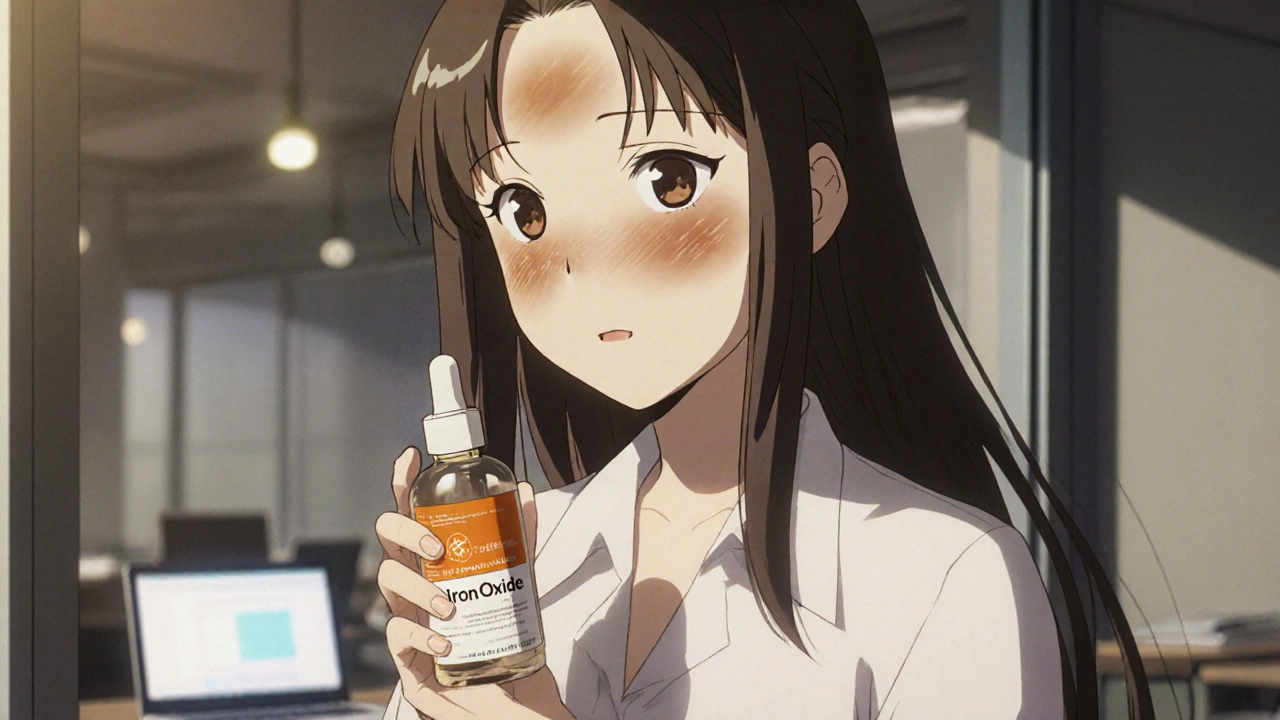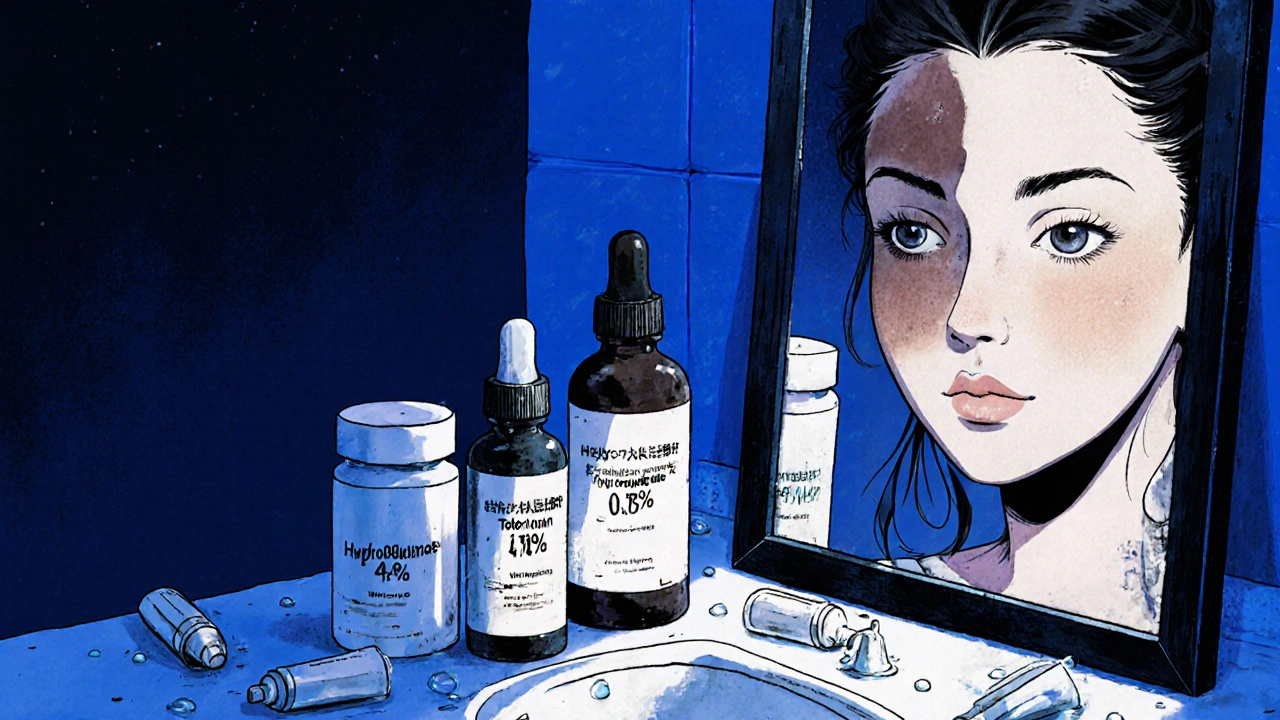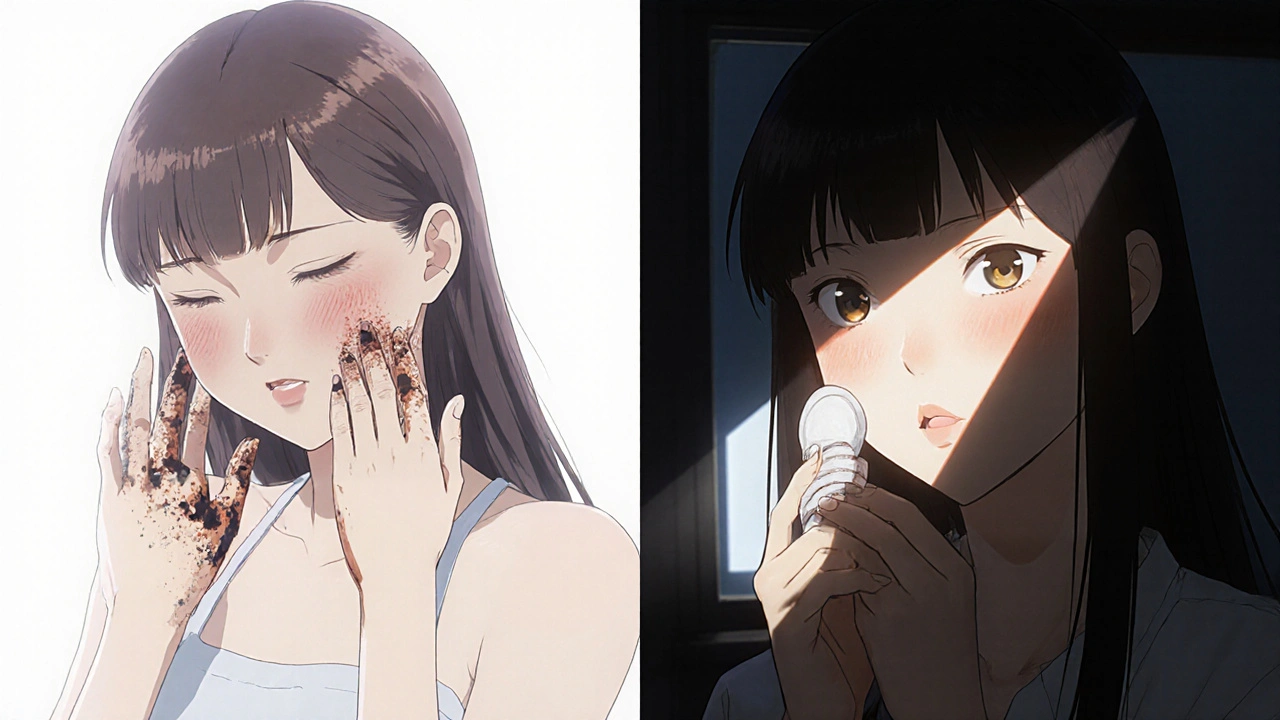Hyperpigmentation: Melasma, Sun Damage, and Topical Agents That Actually Work
 Nov, 16 2025
Nov, 16 2025
Dark patches on your face that won’t go away? You’re not alone. Many people mistake melasma for just another sunspot, but they’re two very different problems - and treating them the same way can make things worse. If you’ve tried random creams, skipped sunscreen, or jumped into laser treatments too soon, you’re probably frustrated. The truth is, hyperpigmentation isn’t one condition. It’s a family of issues, each with its own cause, behavior, and cure. And getting it right starts with knowing which one you have.
What’s Really Causing Your Dark Patches?
Melasma and sun damage (also called solar lentigines) both look like brown spots, but they start in completely different ways. Melasma shows up as large, blurry patches - usually on the cheeks, forehead, or upper lip. It’s not just from the sun. Hormones play a huge role. If you’ve been pregnant, on birth control, or taking hormone therapy, your risk goes up. Women with medium to darker skin tones (Fitzpatrick III-VI) are 3 to 5 times more likely to get it than lighter-skinned people. And even if the trigger is gone, the spots stick around.
Sun damage, on the other hand, shows up as small, crisp, well-defined spots - like freckles that got too big. They show up where you’ve spent years in the sun: face, hands, shoulders. Almost 90% of fair-skinned people over 60 have them. This isn’t about hormones. It’s about UV rays burning your skin over time and forcing melanocytes to overproduce pigment in specific spots.
Here’s the kicker: melasma can be triggered by visible light - the kind that comes through windows and LED screens - and even heat. That’s why a regular sunscreen won’t cut it. You need one with iron oxide to block that extra light. Sun damage? UV protection is enough. But if you treat melasma like sun damage, you risk making it worse.
Why Most Creams Fail (And What Actually Works)
The most common mistake? Using the same cream for both conditions. Hydroquinone, at 4% strength, is still the gold standard for melasma - but only when used correctly. It blocks the enzyme that makes melanin. Used alone, it helps about 30% of people. Used with tretinoin and a corticosteroid (a triple combo), it works for 50-70% of patients in 12 weeks. But here’s the catch: you can’t use it longer than three months. After that, you risk exogenous ochronosis - a rare but permanent brownish discoloration.
Tretinoin (0.025%-0.1%) doesn’t bleach skin. It speeds up skin turnover, so old, pigmented cells flake off faster. Vitamin C (10%-20% L-ascorbic acid) is a powerful antioxidant that reduces existing pigment and stops new melanin from forming. Used together, these three ingredients form the backbone of most dermatologist-recommended regimens.
But if you have sun damage, these topicals work slower. Lasers and light treatments like IPL are far more effective. IPL targets the pigment directly, heating it up until it darkens and flakes off in 3-5 days. Success rates? 75-90% in just 1-3 sessions. But if you try IPL on melasma, you’ve got a 30-40% chance of making it worse. Heat wakes up the melanocytes, and they go into overdrive.
Sun Protection Isn’t Optional - It’s the Foundation
Dr. Kourosh from Harvard says it plainly: “The sun is stronger than any medicine I can give you.” And he’s right. No cream, no laser, no peel will work if you’re not protecting your skin every single day.
For melasma, you need more than SPF 30. You need SPF 50+, mineral-based (zinc oxide or titanium dioxide), and crucially - iron oxide. Regular sunscreens block UV, but not visible light. That’s the part that triggers melasma in up to 30% of cases. Even sitting near a window indoors can feed the problem. Studies show that people who skip daily sunscreen have melasma recurrence rates over 80% within a year.
For sun damage, daily SPF 30+ is enough - but only if you apply it right. Most people use less than a quarter teaspoon for their face. That’s half the dose you need. Reapply every two hours if you’re outside. No exceptions.

When Lasers Help - And When They Hurt
Laser treatments are powerful, but they’re not magic. For sun damage, they’re often the fastest solution. IPL, Q-switched lasers, and fractional resurfacing can clear spots in weeks.
For melasma? Not so fast. Dermatologists now use a “melanocyte rest” approach: 8-12 weeks of topical treatment first, to calm the pigment cells. Only then do they consider lasers. Even then, they pick gentler options like low-fluence Q-switched lasers, not aggressive IPL. The goal isn’t to zap the pigment - it’s to gently fade it without triggering more.
And if you have darker skin? Be extra careful. Post-inflammatory hyperpigmentation (PIH) - dark marks left after inflammation - is 15-30% more common in people with deeper skin tones. Lasers can trigger PIH, and once it starts, it’s harder to treat than melasma itself.
What About Newer Treatments?
There’s hope beyond hydroquinone. Tranexamic acid, originally used for heavy periods, is now showing up in creams and oral pills for melasma. A 12-week study showed 45% improvement with no major side effects. Cysteamine cream (10%) is another emerging option - it works differently, reducing pigment without suppressing enzymes, and causes less irritation. In trials, it improved melasma in 60% of users after 16 weeks.
Niacinamide (5%) and kojic acid are popular in OTC products, but they’re weaker. They help a little, but won’t clear stubborn melasma. Still, they’re good for maintenance or for people who can’t tolerate stronger prescriptions.
And yes, the FDA is considering making hydroquinone available over the counter - but with strict warnings and monitoring. That could make it easier to get, but also riskier if people misuse it.

Your Realistic Treatment Plan (No Fluff)
Here’s what works - step by step:
- Morning: Cleanse, then apply vitamin C serum (15% L-ascorbic acid). Wait 5 minutes. Then apply a mineral sunscreen with zinc oxide and iron oxide (SPF 50+). Reapply every 2 hours if outside.
- Evening (alternate nights): Night 1: Apply hydroquinone 4% (only on dark patches). Night 2: Apply tretinoin 0.05%. Skip both nights if skin is irritated. Don’t use both on the same night.
- Every 4-6 weeks: Consider a gentle chemical peel (like glycolic or lactic acid) done by a dermatologist. This boosts results by 35-50%.
- Patience: You won’t see results in 2 weeks. Give it 8-12 weeks. If nothing changes by week 16, talk to your dermatologist about switching strategies.
And here’s what not to do:
- Don’t skip sunscreen because it’s cloudy or you’re indoors.
- Don’t use multiple brightening creams at once - you’ll irritate your skin.
- Don’t rush into lasers without 3 months of topical prep.
- Don’t stop treatment when you see improvement. Melasma comes back fast.
Cost, Compliance, and the Hard Truth
Prescription topicals cost $50-$150 a month. Laser sessions run $300-$600 each. Most people try OTC products first - 85% do. But they often fail because they’re too weak or used inconsistently.
The biggest problem? Adherence. Only 35% of people stick with their regimen for the full 6 months. If you stop, melasma returns - in 95% of cases within 6 months. That’s why dermatologists now push for simple routines: fewer products, clearer instructions, and daily sunscreen as non-negotiable.
There’s no quick fix. But there is a path - if you’re willing to be consistent. The right combination of sunscreen, prescription topicals, and patience can turn stubborn patches into skin that looks even, calm, and healthy. It’s not easy. But it’s possible.
Can melasma go away on its own?
Sometimes - but only if the trigger is removed and you protect your skin. Melasma linked to pregnancy often fades after delivery, but only if you avoid sun exposure. If you’re on birth control or have hormonal imbalances, it’s unlikely to disappear without treatment. Even then, recurrence is common without ongoing sun protection.
Is hydroquinone safe for long-term use?
No. Hydroquinone should be used for no more than 3 months at a time. Long-term use increases the risk of exogenous ochronosis - a permanent blue-black discoloration, especially in darker skin tones. After 3 months, switch to alternatives like tranexamic acid, niacinamide, or cysteamine for maintenance.
Why does my sunscreen still let my melasma get worse?
Most sunscreens only block UV rays. Melasma is also triggered by visible light (from the sun and indoor lighting) and heat. You need a mineral sunscreen with iron oxide - it blocks visible light too. Look for products labeled “tinted” or “with iron oxide.” Regular clear sunscreens won’t cut it.
Can I use retinol instead of tretinoin?
Retinol is weaker and slower than tretinoin. It might help a little with mild pigmentation, but for melasma or stubborn sun damage, tretinoin (a prescription retinoid) is far more effective. Retinol won’t speed up skin turnover enough to make a real difference in 3-6 months.
How do I know if I have melasma or just sun damage?
Melasma is symmetrical, blurry-edged, and often on the cheeks, forehead, or upper lip - especially in women with hormonal triggers. Sun damage is smaller, more scattered, and appears on areas with the most sun exposure - like the nose, hands, and shoulders. A dermatologist can confirm with a Wood’s lamp exam or skin biopsy if needed.